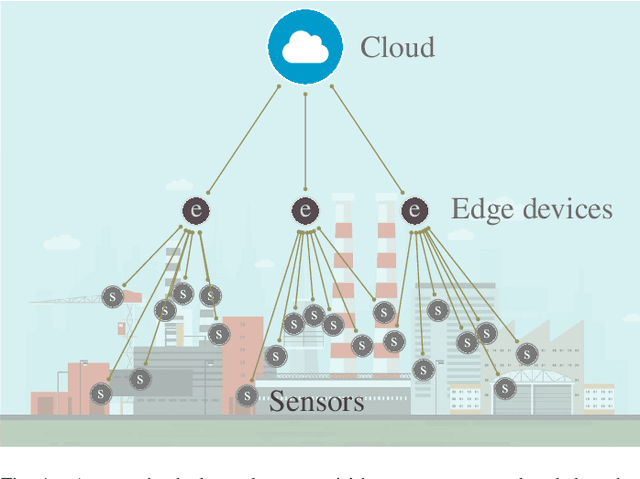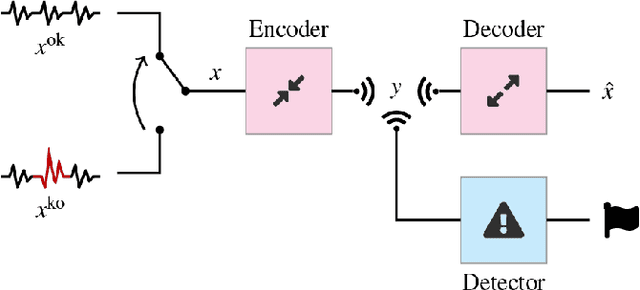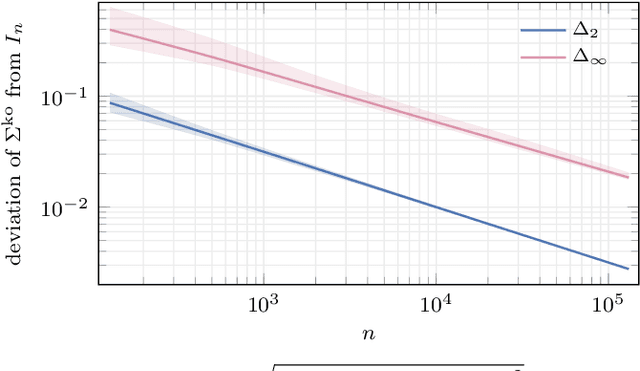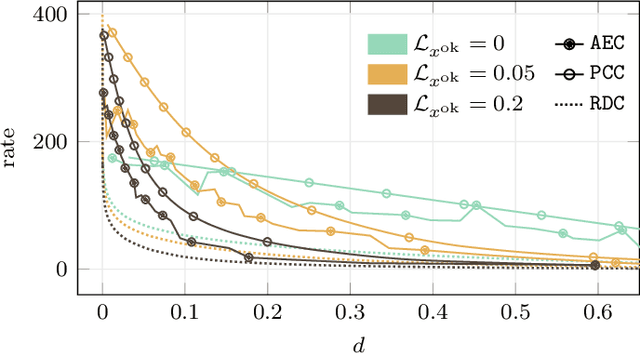Andriy Enttsel
Goal-Oriented Joint Source-Channel Coding: Distortion-Classification-Power Trade-off
Sep 17, 2025Abstract:Joint source-channel coding is a compelling paradigm when low-latency and low-complexity communication is required. This work proposes a theoretical framework that integrates classification and anomaly detection within the conventional signal reconstruction objective. Assuming a Gaussian scalar source and constraining the encoder to piecewise linear mappings, we derive tractable design rules and explicitly characterize the trade-offs between distortion, classification error, and transmission power.
Anomaly Detection based on Compressed Data: an Information Theoretic Characterization
Oct 06, 2021



Abstract:We analyze the effect of lossy compression in the processing of sensor signals that must be used to detect anomalous events in the system under observation. The intuitive relationship between the quality loss at higher compression and the possibility of telling anomalous behaviours from normal ones is formalized in terms of information-theoretic quantities. Some analytic derivations are made within the Gaussian framework and possibly in the asymptotic regime for what concerns the stretch of signals considered. Analytical conclusions are matched with the performance of practical detectors in a toy case allowing the assessment of different compression/detector configurations.
 Add to Chrome
Add to Chrome Add to Firefox
Add to Firefox Add to Edge
Add to Edge